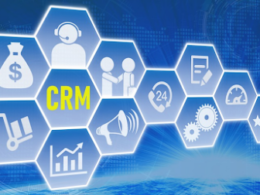I usually counsel against using the word “free” when talking about the government market, but there is some good, free research that you can do on your own, and it will pay dividends. In fact, there is freely available, useful information available on most government web sites that can help you when selling to the government.
In the government market, “transparency” is the word of the day. There is a fair amount of publicly available information if you know where to look. In this article we will take a look at one of my favorite tools and do a “walk though” of how to use it.
As the best known way to sell to the Federal government is through GSA Schedules (Reference: Get Started in Government Contracting with GSA Schedules), you should uncover the GSA Schedules-related money trail in order to identify viable opportunities for your company to sell to the government and to understand which companies to keep your eye on and potentially learn from.
For several years the GSA Schedule Sales Query has been available if you knew where to look: http://ssq.gsa.gov.
When you go to this page, simply click on “Create Report” from the menu on the left side. This will take you to a form that asks for your name, company, etc. Don’t fill this out, just click on “Proceed.” This will take you to a page with 11 report options. I normally focus on #10 – “Total by Contractor for a Specific Schedule and Fiscal Year.” So I select that and click on “Generate report.”
You need to know the Schedule you are searching for, because the screen will ask you to select the Schedule for which you want a report. I selected 71I for this article (office furniture). I also get to pick for which fiscal year (FY) I want the report (2003-2009). As FY 2009 is not complete, I chose FY 2008.
Now you need to select the format. There are three choices: text file for importing, text file for printing, and excel spreadsheet. I always choose excel. Then I click “Create report.” On the next screen you are asked to read the disclaimer and approve. Do so. If you don’t accept, you don’t get the report.
Depending on the report (some are larger), you can wait up to 2 minutes for the report to be delivered. Scroll to the bottom of the page and click "RIGHT Click Here to Download Report."
I now have a report of all 369 vendors on Schedule 71I and how much each made in FY 2008. I also have the total reported sales for Schedule 71I of $945,562,280. Scrolling through the list I can see the top five vendors on this Schedule are Herman Miller ($140 million), Haworth ($103 million), Knoll ($88 million), Kimball ($62 million) and Hon ($57 million) – indicating the top 5 vendors took over 40% of the revenue on this Schedule. It is not uncommon for the top 5-10 vendors in any one category to dominate the sales, but this does not mean you should not play. It means you should try to take marketshare away from the smaller players.
When I am doing research, I usually run reports across multiple years to see who is growing GSA marketshare, who is losing GSA marketshare, and to see if there are any new players worth watching.
Note the difference between “GSA marketshare” and “government marketshare.” GSA is only one way the government buys. Those growing or shrinking on GSA may be using other government contracts, and not all contracts are as easy to follow as GSA. This is especially true for higher-end products and services. If you want information on other contracts particular companies are using, go to the company web site. Most companies list all of their government contracts so government employees visiting the site know how best to access the product or service.
With that said, though, GSA sales are a pretty reliable barometer to determine who the players are and where they fit as far as sales go. Make the Schedule Sales Query part of your government arsenal.
In the next article, we’ll look at a few additional online research tools.
Eager for more? Check out Mark’s other articles below for more great Business-to-Government (B2G) related information and tips:
- Getting Started in the Business-to-Government Market
- Get Started in Government Contracting with GSA Schedules
- Securing Government Micro-Payments
- So, You Want to Sell Services to the Government?
- B2G Product Marketing – Your Company Website






